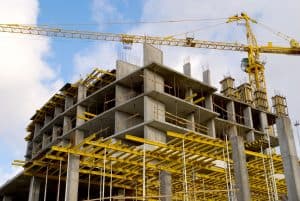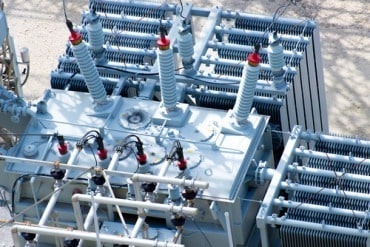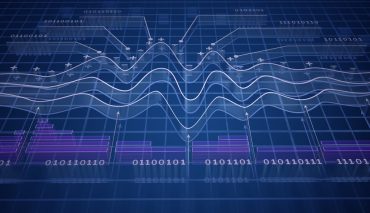
Construction industry use of digital twin technology can cut costs, improve living quality, optimize safety, and drive sustainability.
When people think of digital twins, industries like aviation and manufacturing typically come to mind. But the technology is rapidly expanding into other industries. And like any nascent market, there is a need for a trusted source of information and leadership to validate best practices and guide the development of standards. Enter the Digital Twin Consortium, an Object Management Group (OMG) organization that brings together industry, government, and academia to drive consistency in vocabulary, architecture, security, and digital twin technology interoperability.
RTInsights has teamed with the Digital Twin Consortium to develop a series of interviews with the people leading the effort. We recently spoke with William Ruh, CEO, LendLease Digital, one of the consortium founding members. Ruh serves as the chair of the consortium’s steering committee. Here is a summary of our discussion with Ruh.
RTInsights: How did LendLease first get involved in digital twins?

Ruh: I started at LendLease about two years ago. One of the reasons I joined was that they had started a digital twin journey. Seeing what we had done when I was at General Electric with digital twins in the aviation industry and the power industry, LendLease saw the power a digital twin in design had in improving the quality, reducing the risk, and increasing the efficiency of how you might build a building.
They began to invest in this idea that you could use and create a full digital twin. It would have a one-to-one fidelity down to the bolts in a building, which is very complex, before you build the building. So, you could create the building before you physically built the building. And you could optimize it, using that digital twin. As a result, you can change our industry in the same way we’ve seen aviation and other industries become impacted by their use of digital twins.
RTInsights: What is unique about the LendLease digital twin solution?
Ruh: What makes our solution unique is that we are doing the automatic generation of the design. Today, we can do about 30 to 35% of the building automatically. And eventually, over the next five years, we could do 100%. Imagine the complexity of building a residential complex, or many residential buildings with retail, maybe below, and underground parking.
What we’re able to do today is we can automatically generate a mass timber structure for such residential buildings. That has never been done before. We can optimize it in that generation. We are also working on automating the generation of the facade. We’re just about done with the side. We’ll eventually be able to do steel, concrete, and a multitude of different sides. We’re also moving into the mechanical, electrical, and other aspects. In five years, we think realistically 80% of the building will be automatically generated as a digital twin.
And that’s what’s different than other industries, which develop a design and then optimize it using a digital twin. We’re talking about automatically generating the design. We think we could take the costs down by up to 20%. Everybody wants lower costs and quality living. Digital twin technology is the way that we’re going to get there.
Digital twins are not just about cost and efficiency. They also can drive improvements in safety. Is the load right in the building? Is it optimized for safety? Digital twins also may help in the drive towards a sustainable, greener future. The technology is the center point of safety and sustainability, which can help make the world better.
As a developer, you have a piece of property. There are many constraints on that property. We can digitize the constraints and building regulations by city, county, state, and country. We also consider other factors. What is the market willing to bear for rents or sales of those units? You also have a plot of land that has a certain geometric set of constraints. How do you optimize that geometry? You take the constraints you’re given, and the geometry, and the one thing math is good at is optimizing. So now, you could optimize the structure. You can think about things like where do you place the elevators in that structure? Where do you optimize for views because the views will give you higher returns? You want to make sure you optimize the amount of space you’re using there.
At the same time, you still want creativity put into this. We can generate a structure, a bar structure, an L structure on mass timber, and make sure it meets all the regulations and allows you to optimize the number of apartments, the rentable square footage, and more. This math is so important, and that’s the beauty of a digital twin generation is you’re using math to optimize the structure. And you’re using the math to deal with the physics to ensure the structure will meet the loads and all the safety and other requirements you need going forward.
RTInsights: What industries most benefit from digital twins today?
Ruh: I think the U.S. government – the military and NASA – really started using digital twins a long time ago to deal with complex systems. So too did aviation and the utility industries. What aviation has done is quite incredible. They would never build a plane without the full design being done. They know where every bolt is. They know where everything in that plane is. You’re talking about something that’s very complex. That is an industry that pioneered this. They used a lot of high-speed computing.
The emergence of public cloud will allow our industry to do what the aviation industry did in the past. We don’t need that high-end compute environment. We can use a very cheap public cloud to accomplish the same thing.
The other thing I’d say is I admire what the utility industry has done with predictive maintenance. And I think in the future, nothing’s going to break where you didn’t know about it at a time. And that idea of predictive maintenance is so valuable in our world today.
RTInsights: What industries do you think will benefit from digital twins in the future?
Ruh: I came to LendLease because I think the property and real estate market is ripe for change. If you look at the industrial world over the last 50 years, productivity has gone up 175% on average. If you look at the construction world, it’s gone down 19%. Over the last 50 years, we are at the low end of the performing industries in terms of efficiency. And that’s because we didn’t use technology. I see a great opportunity in the property market to be able to what other markets have done.
And you can see it coming to the healthcare market, too. Why isn’t there a digital twin of us individually? How do you take data and think about predictive health? I think in the future if you have a high-fidelity digital twin model of humans, you can have predictive health. We’re at the early stages of seeing that. Look at everything going on in biomedicine. There is DNA, and of all these devices, we’re attaching to ourselves that are cheap sensors. I think the endpoint where we achieved Nirvana is when healthcare is run by digital twins.
RTInsights: What do you think the digital twin industry will look like in 5 years?
Ruh: I’m amazed at how fast the uptake has occurred on the digital twin consortium. I think the consortium is one of the fastest-growing consortiums ever. What that tells you is that people see business value in this. They’re going to get better outcomes. In five years if you say to your C-suite executive machine learning, they don’t quite know what their business value of machine learning is. But I think in five years, we’re going to be at a point where visual twins’ business value we’ll be well-known to a C-suite executive. We’ll see predictive maintenance, build it digitally before you build it physically, cut your costs, cut your risk, and get more efficient.
Those outcomes are so meaningful to an executive of any business in any industry. In five years, digital twins a business issue, not a technology issue. And people will begin to think about how to embed visual twins in every aspect of their business to improve it and augment humans in the process. That’s the future in five years. And I have no doubt about that.







